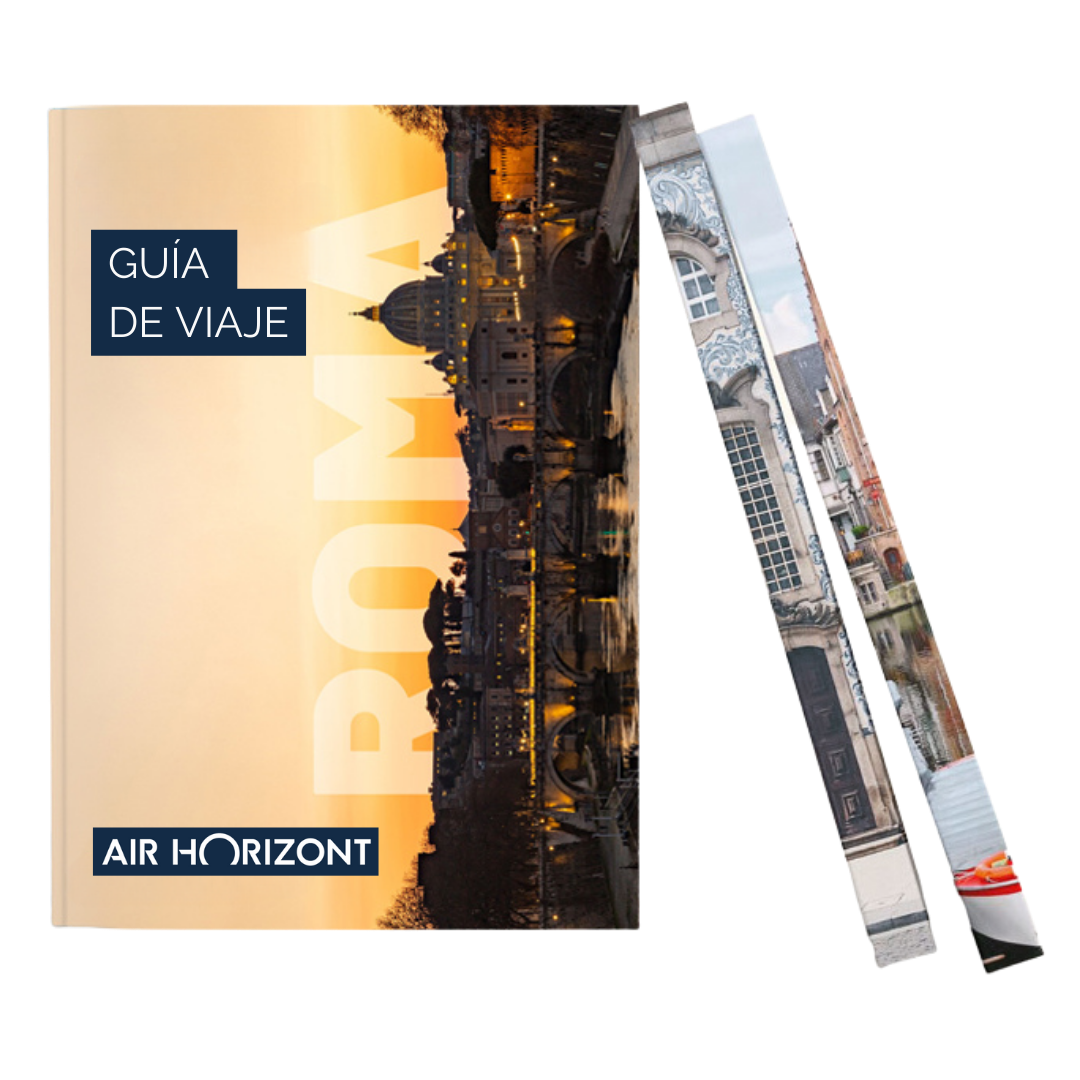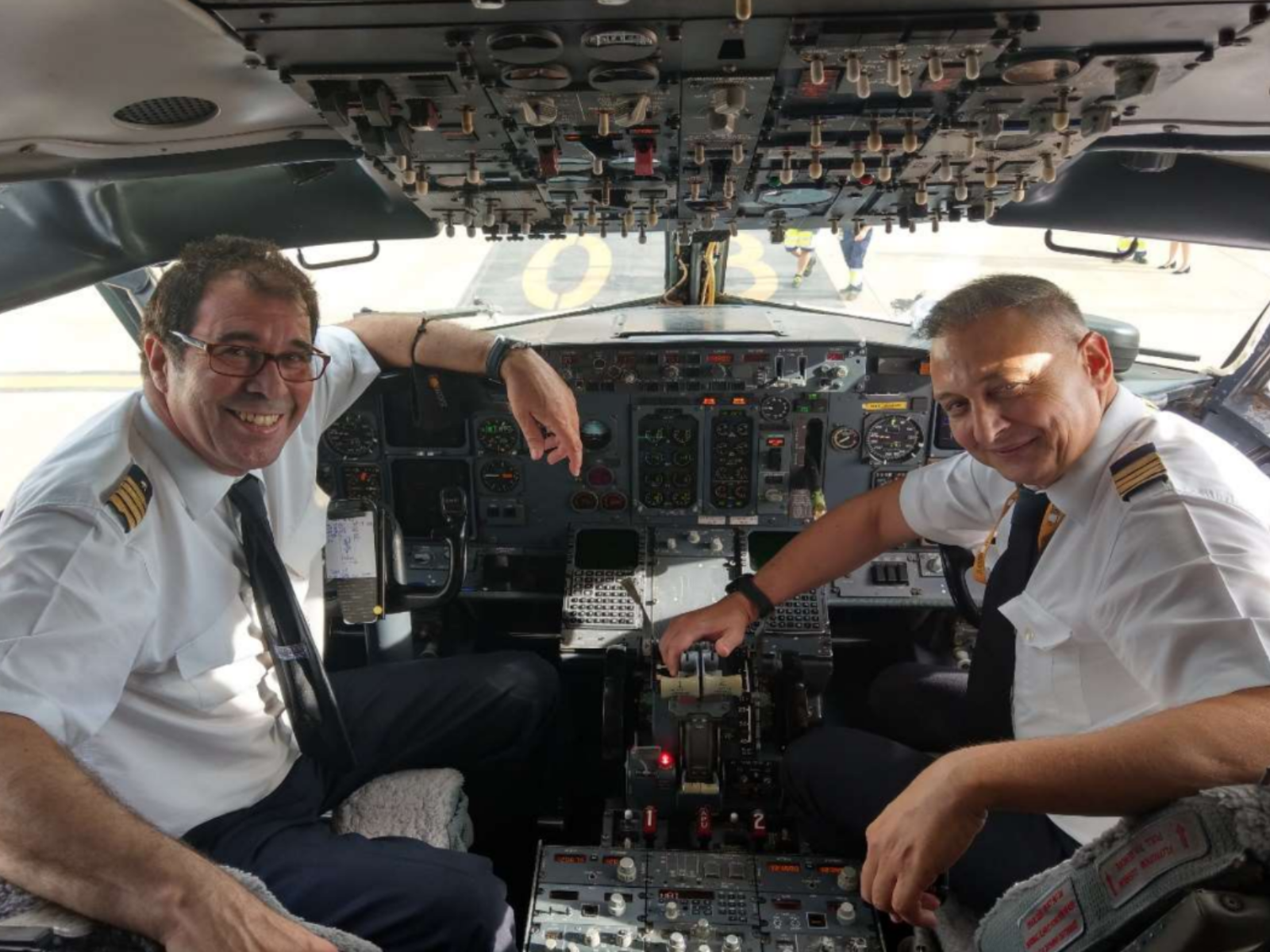Behind the Clouds: The Shocking AC837 Flight and the Decisions that Saved Lives
Zaragoza, December 27, 2023
In the fascinating world of aviation, safety and pilot skill are paramount. While flying at high altitudes may seem like a mystery, Air Canada's AC837 flight over Madrid reveals the complexity and professionalism behind every takeoff.
Discover in this story written by Juan Luis Diez, pilot and CEO of Air Horizont, the critical moments, the bold decisions made and how an experienced crew handled a mid-flight emergency.
Is it safe to fly with only one engine? Why didn't you land immediately? All these questions find answers in this exciting article of a flight that defied the skies and expectations. Join us on this exciting journey behind the clouds!
Aviation is a world little known in reality and with an aura of "mystery", despite the familiarity, it is puzzling and confusing at times for the general public, while appealing to most; the fact of being enclosed in an aluminum cylinder at kilometers high, flying at hundreds of kilometers per hour, and what is "worse", in the hands of strangers, together with everything that surrounds the airport activity itself, creates a certain aura of mystery and uncertainty, which can even cause uneasiness or discomfort to the user.
However, it is the safest means of transportation, unrivaled for medium and long distances, one of the most regulated and supervised among all industrial activities, and in the hands of highly qualified professionals.
There are many examples of how aviation is managed on a daily basis, including emergencies; by way of illustration, I would like to answer the questions that anyone could ask with a true case, and that due to its proximity and repercussion on the skies of Madrid, it is appropriate, and on which answers can be given to some of the questions that worried the public for days, expressing their concern in the media and social networks.
FEBRUARY 3, 2020
Air Canada flight AC837 that took off from Madrid-Barajas with destination Toronto-Pearson, on Monday, February 3, 2020; aircraft, Boeing B767-375 manufactured in 1989, registration C-GHOZ with 138 people on board - 130 passengers and 8 crew members-.
Facts
(Source: Commission for the Investigation of Civil Aviation Accidents and Incidents - CIAIAC*)
On Monday, February 3, 2020, the Boeing 767-375 aircraft, registration C-GHOZ, operated by Air Canada with flight code ACA837 began operations from Madrid-Adolfo Suarez airport (Spain) to Toronto Pearson airport (Canada).
At 14:58:03, two seconds before rotation, the tire exploded and the tread of wheel number 5, corresponding to the left rear wheel of the left main landing gear, became detached. During the event, several fragments of the tire were ingested by the left engine (number 1), producing internal damage to the engine.
The crew continued with the takeoff, stopped the left engine and declared an emergency, being at 700 ft AGL on a runway heading. After several communications with ATC, the aircraft was instructed to move to the southeast of the airport, where it would hold at 5000 ft and then at 8000 ft altitude to consume fuel and avoid making the takeoff in overweight conditions.
During this waiting period, an Air Force military aircraft was mobilized from the Torrejón de Ardoz air base, which made it possible to determine the location and extent of the damage to the landing gear and the aircraft.
1. The time reference used in this report is the local time obtained from the flight data recorder (FDR).
With respect to the ATC reference, there is an offset of five seconds, so that the FDR time is five seconds ahead of the ATC reference. At 18:56 the aircraft had consumed the fuel necessary to perform the takeoff and was beginning the approach to runway 32L at Madrid-Adolfo Suarez airport.
The landing took place without any incident and the aircraft stopped on the runway at 19:08, where it remained until, by applying fans, the temperature of the landing gear brakes was lowered. The aircraft finally left the runway under its own power at 19:55, and at 20:11 the passengers disembarked the aircraft normally. There were no damages or injuries to the people on board.
Excerpt from Technical Report IN-006-2020
THE MOST COMMENTED ISSUES
Is a 30-year-old aircraft safe?
Absolutely, as long as it is properly maintained and updated according to the manufacturer's guidelines. In the Western world, this is very strictly enforced, and there is no doubt about it, since the supervision of the authorities is constant.
Why did the tire fail?
There can be two reasons for a tire failure, a foreign object on the track has damaged the tire casing and the tire has come loose; second, a structural failure of the casing, which has detached from the carcass, in turn, the origin of the structural failure can have several causes. The investigation determined the presence of a 7 cm foreign object on the track.
Could the aircraft have stopped on the runway?
Hardly, the failure occurred just 2 seconds before the safe stopping speed (V1), above which the aircraft is not guaranteed to stop on the remaining runway, and an accident is more than likely. Under these conditions, going into the air is a must - airplanes fly much better than they brake - and experience has shown this to be true.
Can tire debris get into the engine?
Although it may seem complicated for tire debris to be propelled forward and enter the engine, it would be sufficient for them to "approach" the suction area of the engine, which, at takeoff power, would do the rest. The entry of rubber parts, caused damage to the engine, which undoubtedly forced the crew to stop it, to prevent further damage. It should be noted that the engine thrust was not lost instantaneously after the ingestion of foreign material, as the engine stalls, there is still a thrust that "helps", for a few seconds.
Critical moment, shall we raise the landing gear?
At the critical moment of takeoff, speed is life, and the extended gear creates aerodynamic resistance that hinders it; it is necessary to accelerate and "clean the airplane", that is, to raise the gear and progressively, to pick up the hypersustaining surfaces (flaps and slats of the planes); it seems logical that this should be so, more, losing power in one of the engines, heavy aircraft with all the fuel, and with the need to gain altitude for safety; without knowing the procedures of the B767, but other Boeing models, in case of engine failure, gear up ....but we have it damaged.
Prudence, procedures and experience, is the recipe and action in a matter of seconds but without haste, there have been cases in which, precisely, following the procedure to the letter or an inadequate action product of stress, has led to the accident; then, at the decision of the commander, and not knowing the real state of the landing gear, it stays as it is "because if I raise it now, maybe it will not come down later", the last thing we want is to attempt a landing with a landing gear collected, or with the belly. The gear was finally picked up at 3200 feet, 10 minutes after takeoff.
Is it safe for an aircraft to fly with only one engine?
Undoubtedly, all aircraft are designed and certified to fly safely with only one operating engine, so long as maximum continuous operating power (MCT) or less is maintained, no damage to the engine will occur, and this is trained periodically by aircrews. The maximum take-off power (TOT) will have been used to the limit during those initial minutes, in this case. In fact, most of the current aircraft crossing oceans today are twin-engine, ensuring that at all times, with only one operating, they could reach an en-route landing point (ETOPS operations). It should be noted that the aircraft will see its capabilities diminished when operating with only one engine, but nothing that cannot be handled.
The condition of the aircraft after the AC837 failures?
We find an aircraft with a stalled engine, landing gear out and damaged but under control, what's next? The rule in an emergency is: fly, navigate, communicate. The aircraft must head to an area where it does not interfere with normal traffic - dense in the case of Barajas - and can handle the emergency with the help of ground control; "mayday, mayday, mayday" is declared, which can be translated as "I have an emergency, I require priority and immediate assistance", and the controllers will give their full attention to the aircraft, with precision and safety; remember that the command and decisions remain in the hands of the aircraft commander, who at no time "cedes" this responsibility to ground control (ATC).
Why did you fly over the center of Madrid?
The standard takeoff (SID) is no longer valid, there is a specific procedure for each aircraft model according to its flight characteristics (performances), in case of engine failure, but in this case, vectors (course) were given, flying over Madrid in the most direct way, to a safe waiting area, the height above the capital was approximately 3200 feet, about 1000 meters, which happens to be the minimum overflight of a population, no doubt, in this case it was a priority to accelerate the aircraft before ascending, a "controlled risk", if we want.
Why didn't it land immediately?
Firstly, because the emergency has to be managed and the options evaluated; secondly, the maximum landing weight (MLW) is much lower than the maximum take-off weight (MTOW) in any aircraft, since the weight of the fuel to be consumed during the flight is taken into account. Had the aircraft landed with the full MTOW, it would most likely have been structurally affected and the chances of an accident on landing would have been greater. To avoid this, and since this aircraft lacked a fuel release system (there was no extreme need to land, since the emergency was under control), it was decided to proceed to burn the excess, almost four hours in circuit to the south of Madrid, time that was also used to physically evaluate the state of the aircraft by an F-18 of the Air Force, which provided valuable information to the Air Canada crew and the Emergency Teams. The low altitude in the standby circuit, about 2500 meters, contributes to burn fuel faster than at the scheduled flight level, between 10000 and 12000 meters.
Finally, did the crew act correctly?
The crew managed a very complicated situation with professionalism, there is no miracle or luck (just the right one), therein lies their success, making the difficult seem easy. Extensible to ground control, the Barajas emergency teams and the participation of the Air Force; the investigation itself highlighted the correct execution of the procedures, in short, what is expected from qualified professionals, on the ground and in flight. As passengers, we are in good hands.
Juan Luis Díez
Commercial Pilot
YOU WILL ENJOY READING


JOIN THE CLUB
"LIVE FLYING"
WHY WILL YOU LIKE IT?
In the club you will find...
- Promotions with special discounts only for subscribers.
- Travelers' meetings.
- Online travel chats, learn the secrets of the cities where we fly.
- Sweepstakes and contests.
- Top guides with the best secrets of the cities where we are going to escape.
- Visiting the cockpit of a Boeing 737, a photo you will love to have.
- Solidarity actions.
- Workshops from "losing the fear of flying" to "how to organize your getaway saving time and money".
- Ask the expert: everything you would like to know about the world of aviation and never dared to ask.
- Passenger stories. Share with your fellow club members the photo, anecdote or story that caught your attention during your trip.




